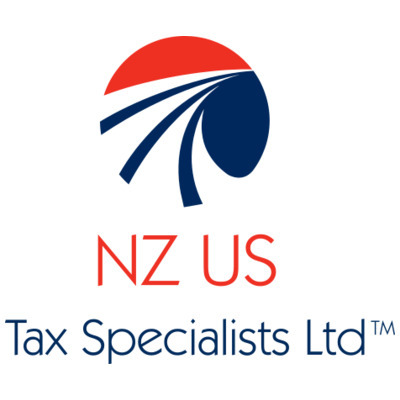According to the results of a survey just out(1), New Zealand is fifth on the list of most desirable countries in the world to expatriate to.
But wait- if you’re tempted by this ranking, and are contemplating a move to New Zealand (‘Aotearoa’, the land of the long white cloud), you need to understand the tax traps in advance.
Why? Many expatriates find themselves in a bind only after they have arrived down under, often inadvertently learning the hard way that the New Zealand tax system has teeth… or even fangs, through its taxing mechanisms.
One of these taxing mechanisms affects U.S. citizens with foreign retirement accounts. U.S. citizens may have pension plans, including 401-k plans, Keough plans, or Simplified Employer Plans for example. Or they may have Individual Retirement Accounts, whether ROTH IRAs, Traditional IRAs or Rollover IRAs.From a New Zealand tax perspective, trying to classify U.S. retirement accounts equates to trying to fit a round hole into a square peg. This is a grey area of New Zealand tax law.
What’s more, New Zealand’s Inland Revenue has identified claims for foreign taxes paid on retirement plan distributions as a risk area and is paying very close attention to foreign tax credits being claimed in New Zealand income tax returns on the likes of U.S. taxes paid on retirement account distributions.
You may be reading this blog thinking ‘I have paid/will pay U.S. income taxes on my retirement fund distributions when the time comes, so how can New Zealand tax me as well?’
The answer is that New Zealand has not only primary taxing rights but sole taxing rights, on certain payments being made out of U.S. retirement accounts.
Which has some serious ramifications if you are in this category and subject to New Zealand income taxes as a full tax resident (ie not a transitional resident).
1. Your U.S. income tax return needs to be prepared by a preparer who has experience in re-sourcing this category of income. Failure to do this can result in not only in penalties for failure to file a Treaty-Based Return Position Disclosure (Form 8833), but classic double taxation – taxed on withdrawal in the U.S., and taxed again in New Zealand.
2. Your New Zealand income tax return needs to be prepared by an accountant who knows how to handle the retirement account distribution. This includes the accountant making adequate inquiries of the taxpayer as to the nature and source of the retirement account.
We have worked on this very issue with the Internal Revenue Service’ Competent Authority Assistance and the Inland Revenue Department. Accordingly, we understand the inter-relationship that exists between the two countries.
During the first four years of tax residency in New Zealand (‘the transitional residence period’) which applies to new migrants, and Kiwis returning home (2), making withdrawals from U.S. retirement accounts does not usually present any New Zealand income tax implications.
The transitional residence exemption period of 48 months allows new migrants to restructure their affairs within the 48-month window of time around their new circumstances.
Once the 48-month exemption period has lapsed, however, New Zealand seeks to tax U.S. retirement accounts in one of two ways (3), explained as follows:
• It may be taxed as a pension, if it meets the provisions of Article 18 1(a) of the income tax treaty which is in force between New Zealand and the U.S.
Article 18 states that ‘pensions, annuities and other similar remuneration arising out of past employment may be taxed only in the country of residence’. Note the use of the word ‘only’, which for U.S. citizens in New Zealand, grants New Zealand sole taxing rights if this article is able to be invoked successfully – ie, the provisions of Article 18 1(a) are met.
• It may be taxable under the current rules for lump sum withdrawals, rules which became effective from 1 April 2014.
With respect to the latter, New Zealand’s Inland Revenue Department currently defines a lump sum withdrawal to be simply:
‘A single payment paid to you directly or transferred to your New Zealand or Australian superannuation scheme. A lump sum does not include a pension paid regularly to you from a foreign superannuation scheme (which is generally taxable in full when received)’.
Source: Inland Revenue Department publication IR 1024 ‘Tax rules for foreign superannuation lump sums’, May 2014
Once a four-year exemption period has expired(4), the lump sum is taxed based on one of two methods, the schedule method or the formula method (the latter which applies if you have a defined contribution scheme). The schedule method takes a percentage of the lump sum withdrawal based on a graduating scale which increases according to the number of years of tax residency in New Zealand as the amount of taxable income in any given year.
At 30 years of tax residency in New Zealand, 100% of any lump sum withdrawal made at that point is taxable in accordance with the lump sum rules and therefore the New Zealand gross tax liability would be equal to taxation under the rules for taxing pensions.
The problem lies in the interpretation of a ‘lump sum withdrawal’, which, in the cases of earlier years of tax residency of New Zealand will result in a more favourable tax position for the taxpayer than under the classification as a ‘pension’.
Taxation as a ‘pension’ gives rise to 100% of the receipt as being taxable in New Zealand, in contrast to only a percentage on the lump sum withdrawal rules.
Problematic is the definition of a ‘single payment’.
- A taxpayer who has made one annual withdrawal is in murky waters and a position challengeable by Inland Revenue, who may try to treat the withdrawal as a pension, despite the lack of periodic payments during the income year.
- Does one payment every two years constitute a ‘single payment’?
- Or does one payment every five years constitute a ‘single payment’?
Putting it another way, what frequency of payment will meet the requirements for classification as a ‘single payment’ under this test?
We understand that Inland Revenue is aware of and working on clarification of these rules. Watch this space.
[1] Expat Insider Inter Nations Survey 2016
[2] Certain qualifying criteria apply to be eligible for this exemption
[3] Some taxpayers can elect to have their foreign retirement accounts taxed under New Zealand’s Foreign Investment Fund (FIF) regime, should they have calculated FIF income on their foreign retirement account and filed an income tax return before 20 May 2013 under the grandfathering provisions in the new rules taxing foreign superannuation schemes. All other taxpayers are required to return income on a cash basis.
[4] There are two four-year exemption periods – one relates specifically to the tax on lump sum withdrawal rules and is called the ‘four-year exemption period’ – the other is the 48-month ‘transitional residence period’ and has a separate set of qualifying criteria. If a taxpayer qualifies for both exemptions, these run concurrently and not consecutively.
This article provides general information, current at the time of publication. The information contained in this article does not constitute advice and should not be relied upon as such. Professional advice should be sought prior to actions being taken based on the information contained in this article.
NZ US Tax Specialists Ltd disclaims all responsibility and liability (including, without limitation, for any direct or indirect consequential costs, loss or damage or loss of profits) arising from anything done or omitted to be done by any party in reliance, whether wholly or partially, on any of the information. Any party that relies on the information does so at its own risk.















